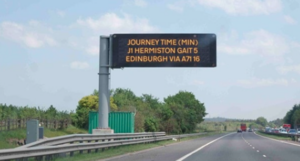Guidance has been published so that local authorities can exercise their discretionary power to implement Workplace Parking Licensing (WPL) schemes.
WPL would see employers pay an annual levy to the council for parking spaces they provide for employees, with revenue raised supporting the objectives set out in their local transport strategy. Parking places reserved for Blue Badge holders, certain parking places at qualifying NHS premises and parking places at hospices will be exempt from any charge.
Local authorities who are proposing to implement WPL will have to undertake their own consultation and impact assessments on how it should be designed and operate in their area.
The development of regulations and guidance on implementing a WPL scheme supports the vision and priorities set out in the National Transport Strategy (NTS2) and progresses Scotland’s commitment to reach net-zero by 2045.
Minister for Transport Jenny Gilruth said: “The Workplace Parking Levy is a key tool which empowers local councils in encouraging people out of their cars and onto more sustainable modes of transport. This is vitally important if we are to reach a 20% reduction in car kilometres by 2030.
“The revenue generated by these schemes must support policies in local transport strategies; which allows local authorities to raise finance and invest it according to local need. The levy can also support improvements in public or active transport, making it more attractive and therefore encouraging individuals to leave their cars at home.
“Providing guidance so that local authorities can make use of their discretionary powers to implement a WPL scheme not only devolves more responsibility to local government – a key priority for the Scottish Government – it also supports the vision and priorities set out in our National Transport Strategy, to create a fairer, greener transport system for everyone in Scotland to share and benefit from.”
Cllr Gail Macgregor, COSLA Environment and Economy Spokesperson said: “The workplace parking levy is a discretionary power for local authorities. It will be for local authorities to decide, in consultation with communities, if a levy is appropriate in their area.
“As we look to deliver emission reduction as quickly as possible, it is important that councils have as many tools as possible at their disposal. It will then be for the local democratic process to decide how these tools should be utilised. The levy also does not sit in isolation from other policies and should viewed alongside other plans for encouraging a modal shift away from car use.
“As a result, local government is ideally placed to consider proposals, such as the levy, holistically when tailoring local and regional transport plans. We welcome the flexibility that such discretionary powers give councils and I hope that we will see more to allow us to deliver better quality, responsive services for our communities.”
The Transport (Scotland) Act 2019 introduced a discretionary power for local authorities to implement WPL schemes. Supporting regulations came into force on 4 March 2022.
The guidance for local authorities has been published on the Transport Scotland website, consistent with commitments made in the Climate Change Plan 2021 Monitoring Report and NTS2 2021-22 Delivery Plan.
The guidance has been informed by the themes that emerged from the public consultation Transport Scotland held last year.
The Scottish Government has also confirmed its intention to embark on a New Deal with Local Government, which includes a commitment to undertake intensive collaborative work on a Fiscal Framework for Local Government this year, alongside a new Partnership Agreement. Building on the work already undertaken on WPL, the New Deal will seek to deliver greater flexibility over financial arrangements for local government with improved accountability for the delivery of national priorities whilst ensuring maximum value for money.






















